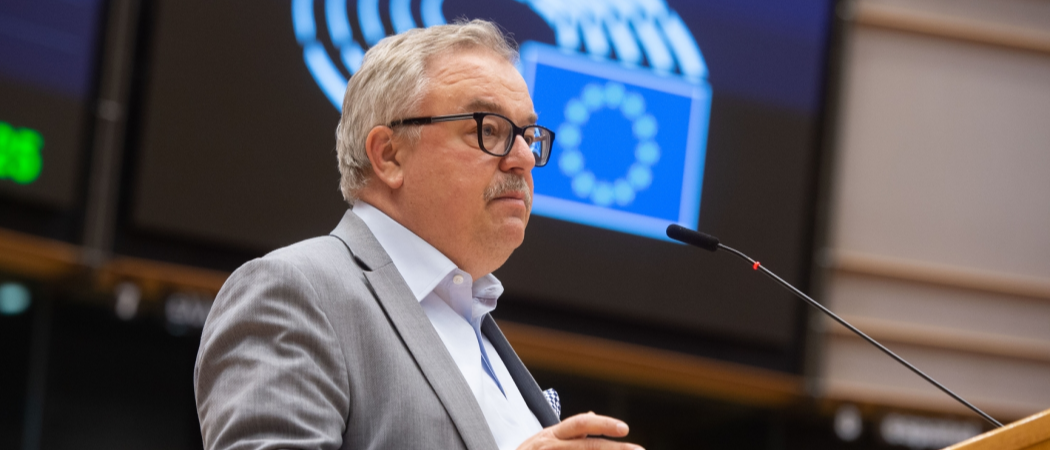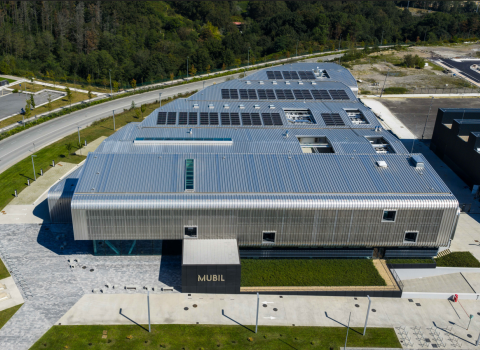Parliament calls for plan to make decarbonised hydrogen production commercially competitive. But there is disagreement on using hydrogen from fossil fuel sources to promote infrastructure and market development in the meantime

Jens GEIER, MEP. Photo: European Parliament
Green hydrogen forms a key plank of the EU’s carbon neutral strategy, but if it is to deliver on its promise the Commission must boost research and set a clear investment strategy to make the technology commercially competitive says a new report which MEPs are expected to back tomorrow.
Producing green hydrogen using electricity from renewable sources to split water into hydrogen and oxygen is technically feasible - but very expensive. Currently, it cannot compete with the existing process, which involves catalytic conversion of methane or other fossil fuel feedstocks.
This is not stopping the EU from putting its eggs in the green hydrogen basket. The European Commission wants to have 40GH of water-splitting electrolysers in the EU by 2030, producing 10 million tonnes of clean hydrogen a year. By 2050, hydrogen is foreseen to become a key part of Europe’s energy mix, requiring an investment of up to €470 billion in the next 30 years.
Backing this ambition, in the next year the Commission will launch the Clean Hydrogen Partnership for Europe, to develop technology for producing, storing and distributing renewable hydrogen. The EU is putting €1 billion into the initiative, to be matched by industry. Another six public private research partnerships will focus on decarbonising industries including rail, aviation and steel production, largely using hydrogen technologies.
“Scientific investment and innovation will be key in achieving these goals, increasing the efficiency of existing technologies and developing new solutions,” said centre right MEP Maria da Graça Carvalho. But she warned, the aims should be achievable. “We have to look at everything realistically, rather than going for technology that hasn’t been proven in pilot projects and research.”
These investments in research come from EU programmes whose funding was slashed last year: the research programme, Horizon Europe; the Connecting Europe the infrastructure fund; the investment programme, InvestEU; and the Innovation Fund for commercialising low carbon technologies.
“It is imperative that those programmes are equipped with sufficient financial resources. Thus, the rapporteur deplores the financial cuts by the Council compared to the Commission’s proposal,” the report says.
Boosting budgets will be of little value unless the money is properly invested and Parliament believes a coordinated investment strategy is needed to ensure projects can get funding from different sources, and that they build on each other, avoiding duplication.
In particular, there is a need to increase energy efficiency, bring down costs and ensure the hydrogen can be safely stored and used. The work does not end with production. Innovation is needed along the entire value chain, especially in the transport sector where deployment of hydrogen gas in fuel cells is still in its early stages, according to the report.
“I agree with the strong need to continue this research and innovation with our proposal for the Clean Hydrogen Partnership,” said EU energy commissioner Kadri Simson. ”We want to ensure that Europe remains the world leader in hydrogen technologies.”
Shades of green
During a plenary debate on Monday, the report received widespread backing, but MEPs had diverging opinions on whether to fully back green hydrogen, or to leave room for carbon-based alternatives to be deployed in the transition period.
Grey hydrogen made from methane releases large amounts of CO2 into the atmosphere. It’s dirty, but cheap, and could underpin the wider deployment of hydrogen as a fuel source. Many back blue hydrogen, also made from methane, but with the CO2 emissions stored, making low carbon hydrogen from fossil fuels possible.
The Parliament supports green hydrogen but does not rule out using these alternatives in the transition phase, in order to build up the hydrogen distribution network and promote market development. The proviso is that the Commission comes up with a plan for phasing out the non-green alternatives.
“We should be doing everything possible to ensure hydrogen is produced by renewable energy, but I do think we should try to produce it from low carbon sources too,” said Jens Geier, the Parliament’s rapporteur on hydrogen.
Many MEPs echoed Geier’s opinion, encouraging the use of low carbon alternatives to build demand and supply chains while Europe waits for green hydrogen technology to become competitive. “Of course, the hydrogen economy needs to be built up. We cannot simply drive from zero to 100,” said centre right MEP Angelika Niebler. “I welcome the fact [the report] makes very clear that we have to have a transitional phase where we have low carbon hydrogen.”
Others said this was inappropriate. “The strategy for developing hydrogen should be something more integrated with renewable energy and should be based on a circular approach to energy rather than an unbalanced focus on hydrogen for replacing fossil fuels and nuclear,” said MEP Damien Carême from the Greens group, who chided gas lobbies for spending a good deal of time and money in attempts to ensure a place for grey hydrogen in the mix.
In the end, the most important thing is a clear roadmap – and the Parliament is proposing several measures such as a common classification system for hydrogen, removing regulatory barriers to ramp up hydrogen production, and incentivising infrastructure development to boost the Commission’s strategy.
It is the 11th hour for setting a hydrogen strategy, said centre right MEP Pernille Weiss.
But Simson called the Parliament’s work “very timely” as the Commission continues preparing the ‘Fit for 55’ package to ensure the EU can reduce its emission by 55% compared to 1990 levels by 2030. “The policy guidelines presented in these two strategies, and your reports and their concrete recommendations are really important for this work,” she told the MEPs.





 A unique international forum for public research organisations and companies to connect their external engagement with strategic interests around their R&D system.
A unique international forum for public research organisations and companies to connect their external engagement with strategic interests around their R&D system.